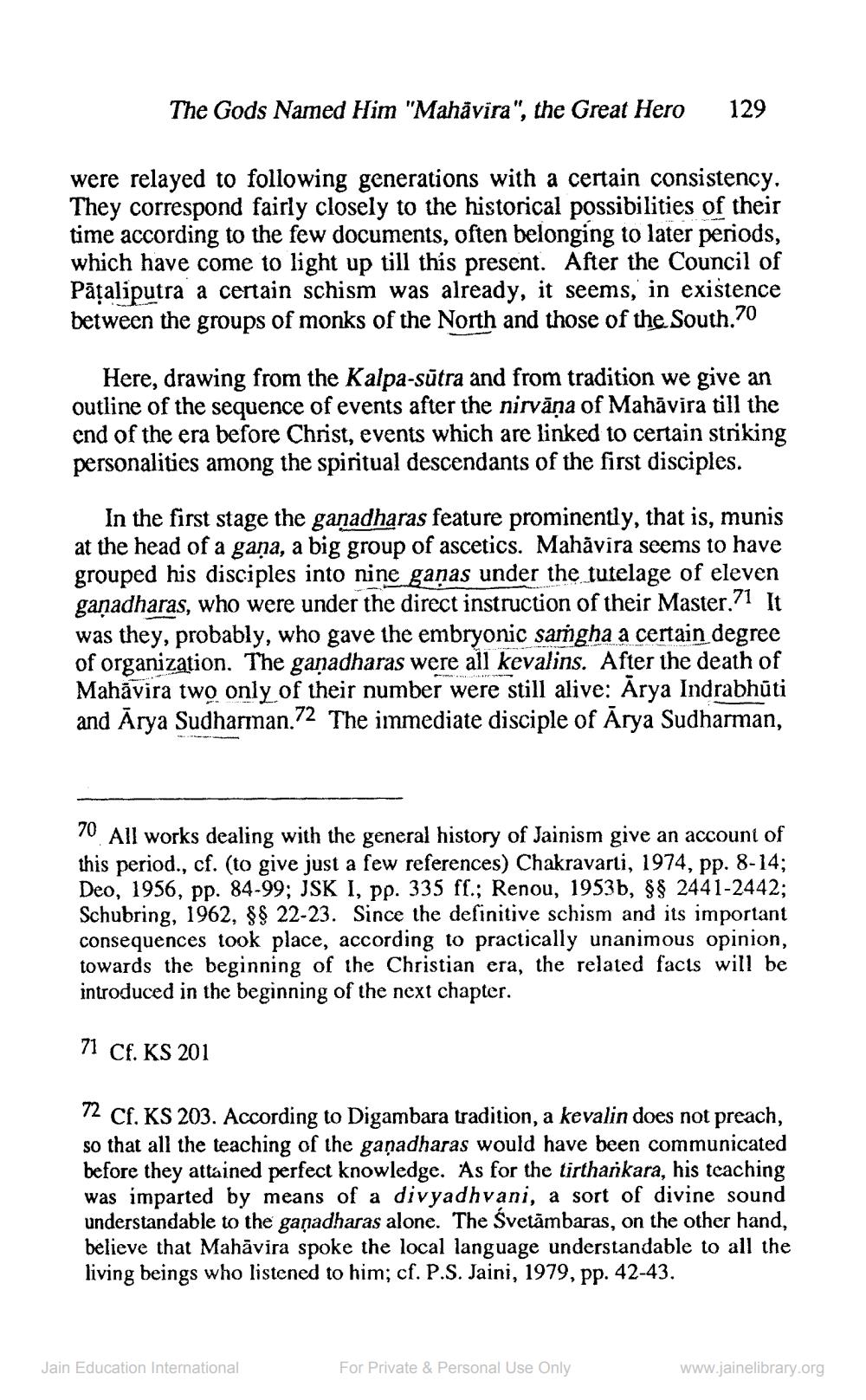________________
The Gods Named Him "Mahāvira", the Great Hero
129
were relayed to following generations with a certain consistency.
They correspond fairly closely to the historical possibilities of their time according to the few documents, often belonging to later periods, which have come to light up till this present. After the Council of Pāțaliputra a certain schism was already, it seems, in existence between the groups of monks of the North and those of the South.70
Here, drawing from the Kalpa-sūtra and from tradition we give an outline of the sequence of events after the nirvāna of Mahāvira till the end of the era before Christ, events which are linked to certain striking personalities among the spiritual descendants of the first disciples.
In the first stage the ganadharas feature prominently, that is, munis at the head of a gana, a big group of ascetics. Mahăvira seems to have grouped his disciples into nine gaņas under the tutelage of eleven ganadharas, who were under the direct instruction of their Master.71 It was they, probably, who gave the embryonic sarngha a certain degree of organization. The ganadharas were all kevalins. After the death of Mahāvira two only of their number were still alive: Ārya Indrabhūti and Arya Sudharman.72 The immediate disciple of Ārya Sudharman,
70. All works dealing with the general history of Jainism give an account of this period., cf. (to give just a few references) Chakravarti, 1974, pp. 8-14; Deo, 1956, pp. 84-99; JSK I, pp. 335 ff.; Renou, 1953b, $$ 2441-2442; Schubring, 1962, $8 22-23. Since the definitive schism and its important consequences took place, according to practically unanimous opinion, towards the beginning of the Christian era, the related facts will be introduced in the beginning of the next chapter.
71 Cf. KS 201
72 Cf. KS 203. According to Digambara tradition, a kevalin does not preach, so that all the teaching of the gaṇadharas would have been communicated before they attained perfect knowledge. As for the tirthankara, his teaching was imparted by means of a divyadhvani, a sort of divine sound understandable to the gañadharas alone. The Śvetămbaras, on the other hand, believe that Mahāvira spoke the local language understandable to all the living beings who listened to him; cf. P.S. Jaini, 1979, pp. 42-43.
Jain Education International
For Private & Personal Use Only
www.jainelibrary.org




